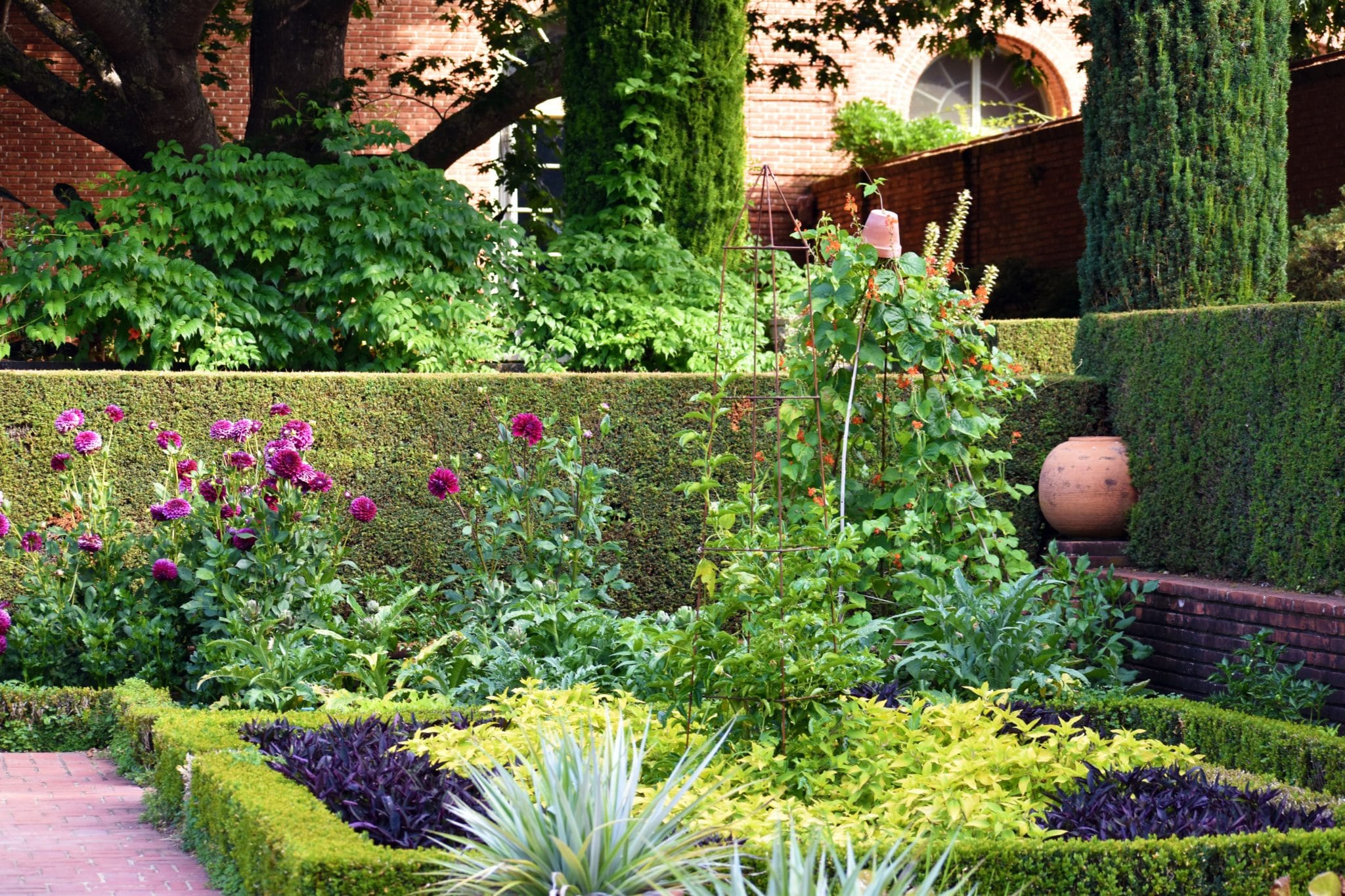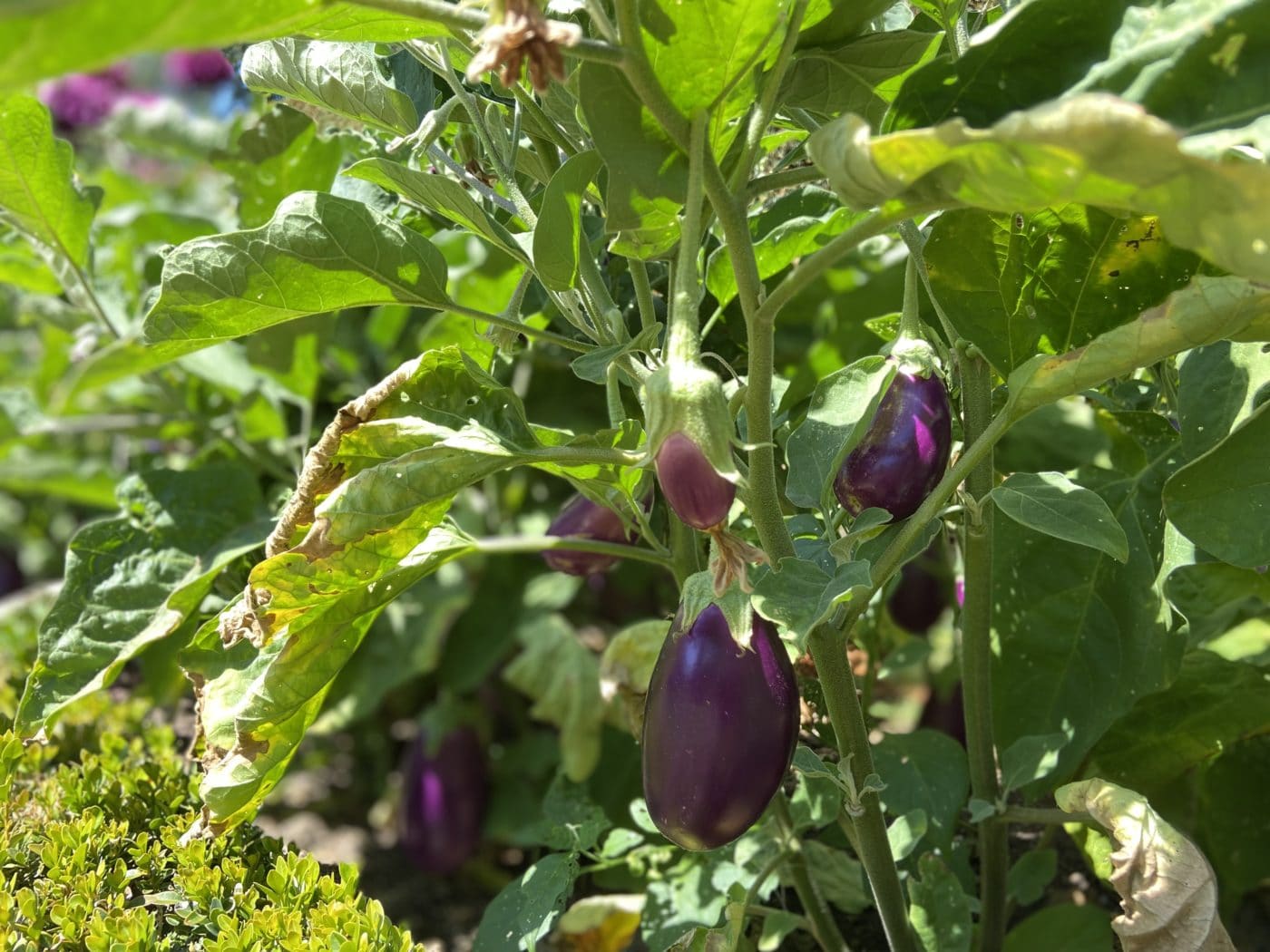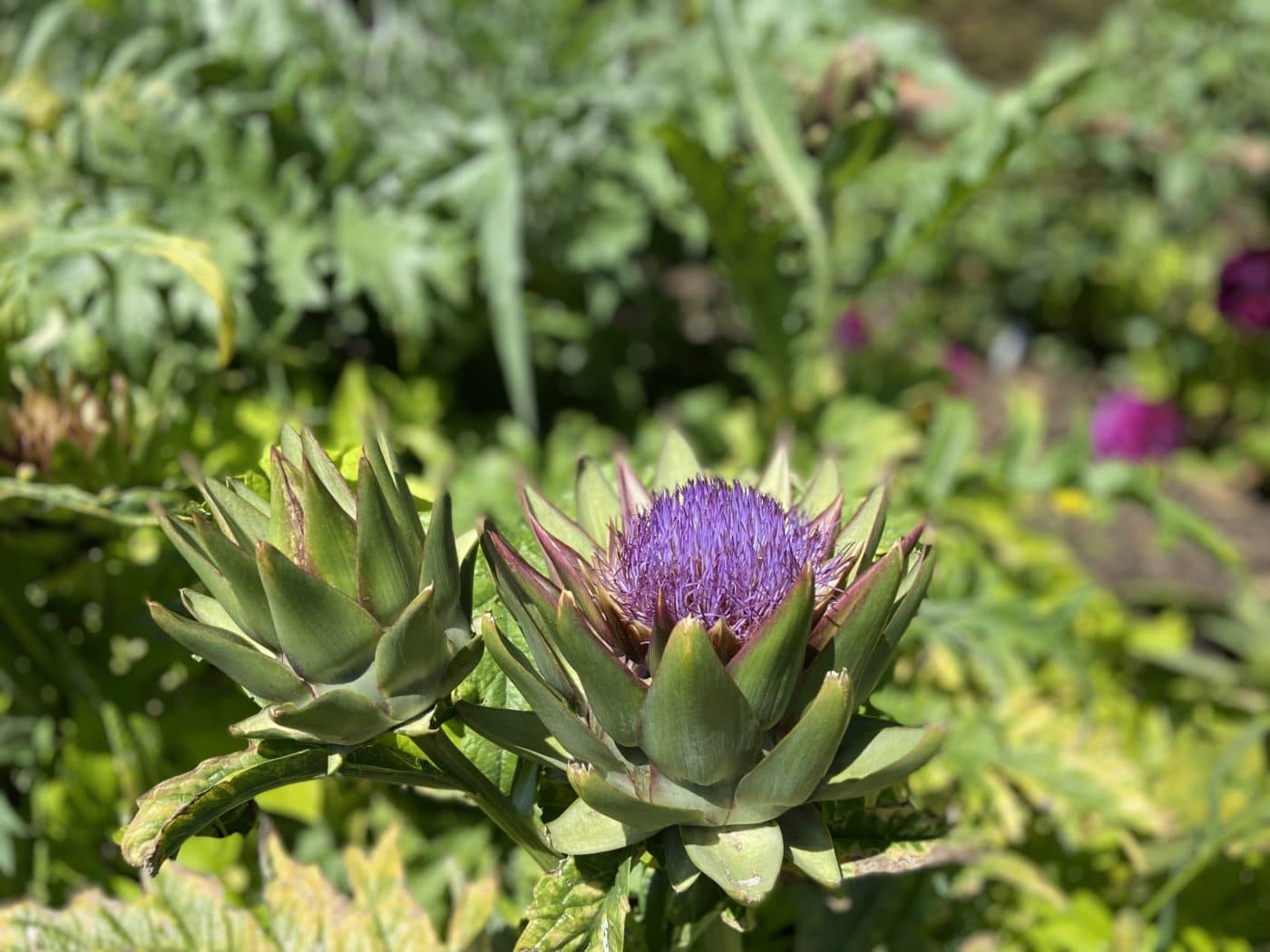The Sunken Edible Garden

This summer, Filoli’s Fruitful Garden exhibit highlights the gifts of edible, medicinal, and pollinator plants with a vibrant display of fruits, vegetables, and herbs. Horticulturist Andrew Bellouin, who cares for the Sunken Garden area, reflects on the joy of planting edibles and the connection of a humble kitchen garden to global foodways.
There are a multitude of gardens in a life, an old Spanish farmer told me once. The skin on his face was roughened and parched and creased like the desert landscape, and his dark hair grew long and wild, brambling like the blackberries he grew, which weren’t the abundant weed we know here in California, but a struggle. There was joy at the corners of his eyes, and his cheeks blushed red in the cold wind of spring: strawberries and strawberries.
There are those gardens we grow up in. These are the ones that just seem to happen and flourish up in the wake of each step. These usually happen early in a life, or the life of a land. Maybe it’s a child’s innate wonder or the aberration of memory, which are gardens in themselves, but it all seems so abundant. The rains come, the plants grow, an errant seed sprouts a pumpkin that encircles the yard in its majesty, berries drip off the vine and acorns brim to the ears. Happy accidents.
Then there are the kitchen sink gardens. Charming and awkward and inventive, sometimes they are the best of all. Mint and thyme in a small wooden box hung outside a city window where the slant of industrial light just reaches. A barrel-full of potatoes leafing out like tendrils on an apartment rooftop, or some stoop tomatoes in old pots; or a handful of seeds that produce a single bell pepper, planted in the weeds of a shared yard, that you water religiously and furtively check every morning.



To keep up with the desire for progress, cultivation, and the daily tilling of society, our gardens grow more ambitious. Homesteads, acred local farms, and roots grown into native soil tap into something indelible and enduring. But mono crops, industrial behemoths, dust bowls, low-waged labor, and pesticides dropped from planes are fruitless branchings into a warming future.
There is another garden as well, one whose seeds are gathered from a lifetime or the lifetime of a land, and this is where the Sunken Garden fits in. It’s not an absolute solution, or a perfectly woven garment, but it’s a spark. It’s an aroma, a quilt sewn by many hands, a promise, a germination, a fitful balance, a harmony. The Spanish farmer once said, his calloused hand opened up like the plowed earth, that you plant three seeds in each hole you dig. One of the seeds is for you, one of them is for your neighbor, and the last seed is for the land.

This year the Sunken Garden has been transformed for summer into an edible display, but one that is embedded in the beauty and grace of Filoli’s grounds. In this way, it weaves a story, about childhood wonder and kitchen sinks and enduring roots. The plants we grow to feed ourselves are beautiful and essential. Scarlet runner beans and sweet potatoes fruit in opposite directions — potatoes in the soil and beans along trellises — and both have a place amongst the formal hedges and peonies of our lives.
This year, like recent past years, has been rough, with wildfires, drought, and the pandemic. It’s important to stay sensitive to a world that is shared with everything on it. Bringing our edible needs into harmony with our cities and commerce, and remembering the joy of mint and thyme outside the window, is a way forward.
Of those three seeds the farmer plants in his soil, a pepper plant grows. Of those peppers, some are eaten by voles and chewed by caterpillars and snails, others are given to friends, and some are made into sauces and pickled to keep through the winter. We hope the Sunken Garden this summer inspires you to create your own edible tapestries, and we hope you enjoy the changing face of the garden as it sprouts and fruits and changes color with the weeks ahead.
